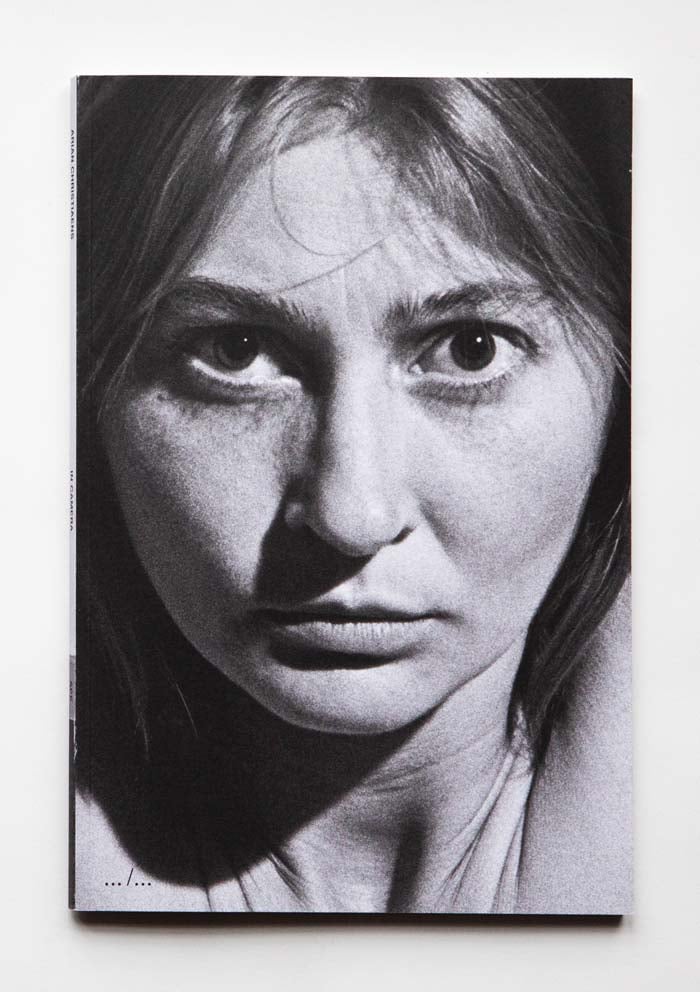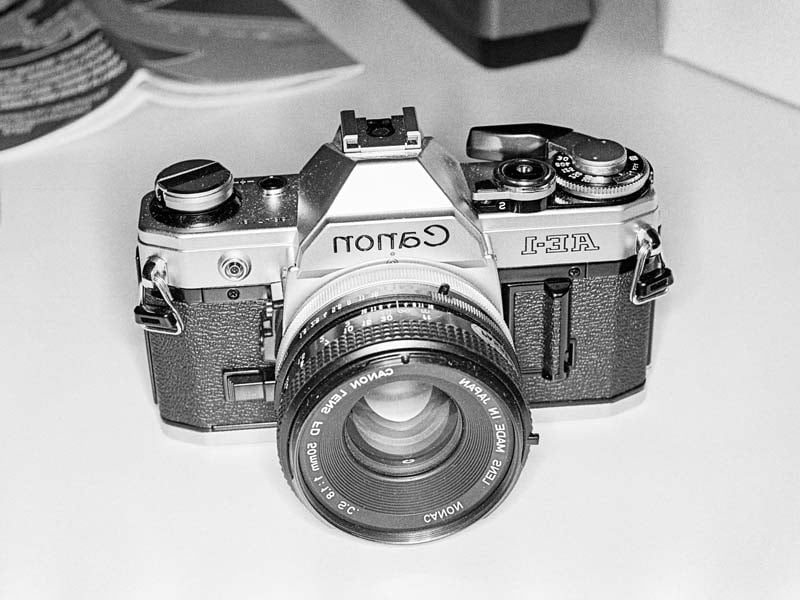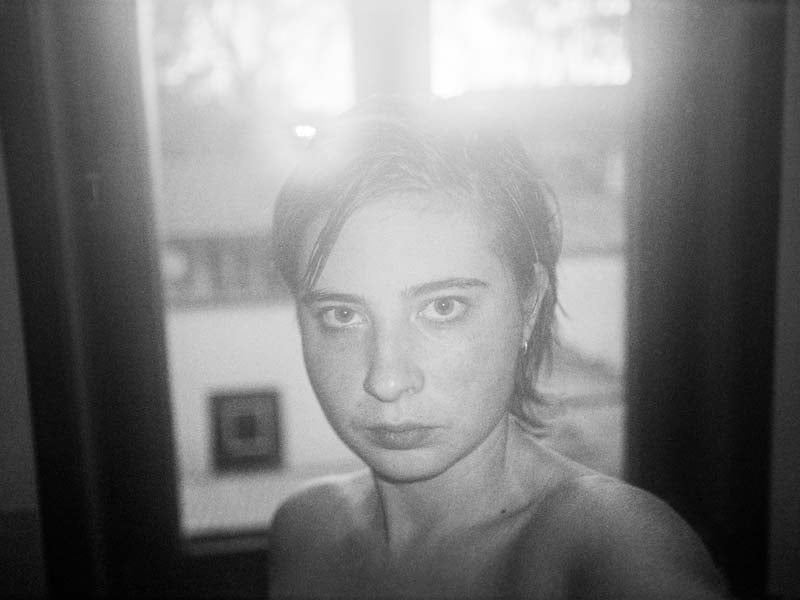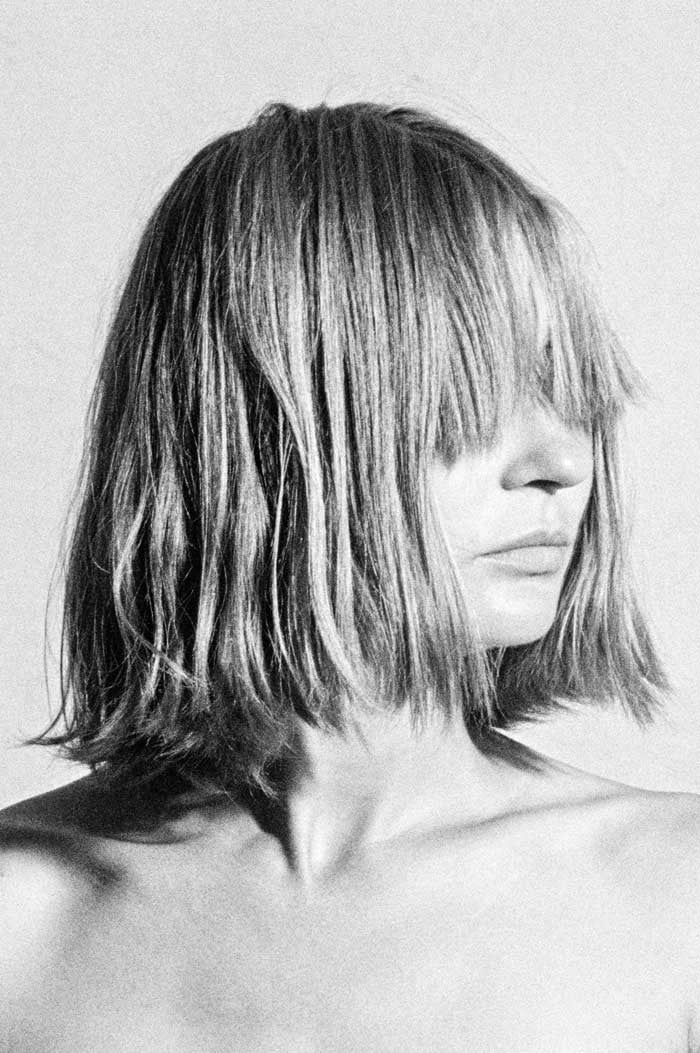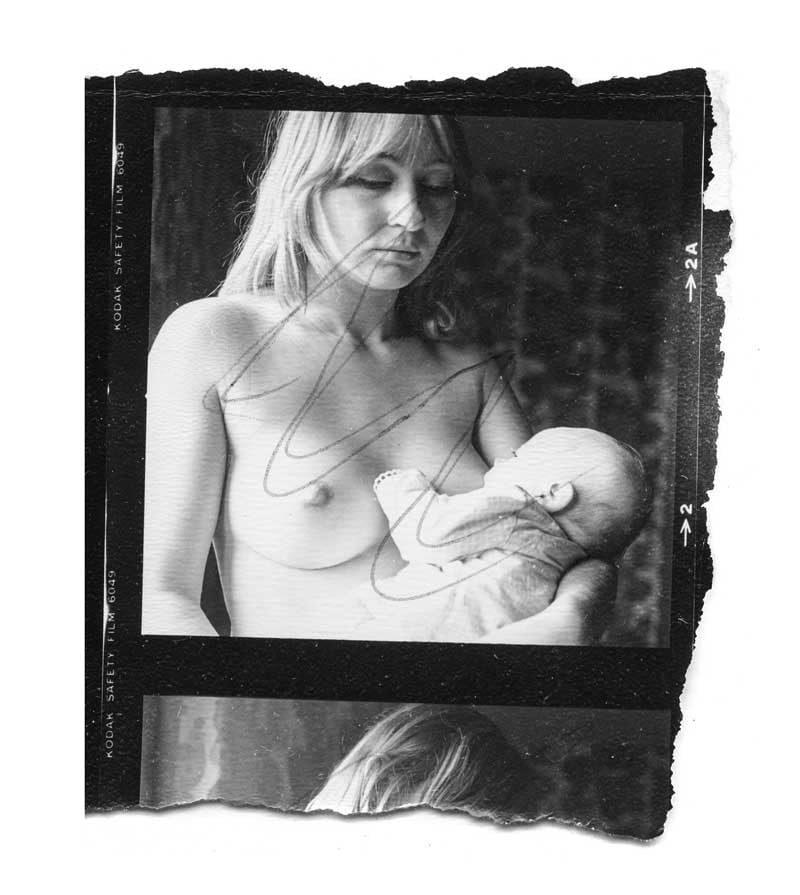In this month’s blog post we look at the work of Arian Christiaens and work in which her mother, her father, herself, the camera, and a variety of gazes battle it out in her new photobook, In Camera.
Image: Cover of 'In Camera' photobook, Arian Christiaens
The first thing you notice about In Camera is the cover. The face of Christiaen’s mother fills the page, her eyes staring directly out at you. Her right eye is partially shaded by the shadow from the flash, but her left eye is staring out intently at the viewer like a bird of prey eyeing its victim. It’s a gaze that is direct, it is a gaze that has power.
Open the book and you come to a double page spread. Again, Arian Christiaens’ mother is standing there. She’s topless, she’s gazing into a mirror, her gaze is deadpan. Behind her stands Christiaens’ father. He’s also bare-chested and he’s holding a Canon AE-1.
Image: Canon camera, Arian Christiaens
It’s an image that exemplifies much of the key theory of photography. There’s the mirror of Szarkowski’s mirror and windows. Are you a photographer looking out at the world or a photographer looking back at yourself. And here, Christiaen’s mother is both. She is a woman who is the subject of images made by a couple in the flush of young love, for whom her body is both a visual subject of pleasure for her partner and his photographic endeavours. At times the pictures become generic, a 1970s cliché of erotic photography, complete with geometrically patterned wallpaper and a plethora of images shot in pastoral grasslands.
Mixed in with these images are self-portraits, photographs where she holds the camera and photographs her pregnant body, her partner pushed to the background. She photographs her new haircut, her eyes covered by a ragged fringe, she puts on the boots and photographs herself in the mirror.
Image: Self-portrait, Arian Christiaens
Flip through the book, and another figure appears, that of Arian Christiaens herself. She is the spitting image of her mother, and as you go through the book, she replicates the expressions, the poses, the attitude of her mother.
She kisses her partner, she confronts the camera with the directness of her gaze, she stands on a chair or a cloth covered plinth, her body split into its constituent parts by cutting the image in half.
There are a multitude of selves in the picture, and a recognition of those selves. That is why the mirror is in there, a key element in Lacanian ideas of mirror theory and the establishment of the self.
Image: Arian Christiaens
In brief, mirror theory is a psychoanalytical idea that looks at the establishment of the idea of the self as an infant, and the transition period when we move from being driven by the real needs of feeding, sleeping, and demanding, to seeing our self in the mirror, and entering an imagined identity of what we are.
Think of the parent holding a child in front of the mirror, pointing to the reflection and saying “that’s you”. Ultimately however, the reflection is not anybody. It is a reflection pure and simple. Mirror theory says that by identifying it, we other ourselves. And it’s the same with a photograph. The camera others us. We are not our image. That’s the general idea.
Ready to take your photography to new heights? Learn more about Falmouth Flexible's online, part-time MA Photography degree:
It’s a theory that forms the foundation of Laura Mulvey’s seminal essay on the Female Gaze, an idea that finds expression in more recent collections such as Girl Gaze, Girl on Girl, and the excellent Feminist Avant-Garde of the 1970s, a book in which women’s agency and representation shifts the aesthetic and critical groundwork by which photographs of women are assessed.
With In Camera, Christiaens creates multiple identities for both her mother and herself. The mirror is referenced and so are the imaginary selves it creates. There is no one self, she says, there are multiple selves and they are all part of who her mother is, who she is.
Image: Arian Christiaens
She goes further than this. The similarity of looks, the replication of poses, the recreation of the image of her mother makes for a blending of Christiaens and her mother. They become one. The penultimate image in the book shows this happening in a photographically symbolic form as we see Christiaens as a child lying with her mother. They are the same person. But who that person is we really don’t know. The final image shows a ripped contact print of a medium format contact print. It shows Christiaens feeding from her mother’s breast, a scrawl of biro rippling across the image of her mother.
Image: Arian Christiaens
It's an image in which male dominated gazes are dismissed, it’s a questioning of whether the gaze is essentially ‘male’. It is not, and Christiaens takes her place in shifting the perspective of what the male gaze is – both in the making of images, and the reading of images. We are not the real self, the imaginary self, or the symbolic self. We are all those things at the same time, we are a multiplicity of selves and the camera plays its part in that. But it’s only a part.
Read more about Photobooks in previous blogs:
- The Grid: Bringing Order, Comparison and Narrative to the Story
- Laia Abril and Rafal Milach: Windows on the World of Misogyny
- Women and Photobooks: Unwriting History
- Photobooks and Collaboration
- Ernest Cole, Photography and Justice
- Photography and Brexit
- Photography and Grief
- Photobooks and the City Destroyed

Colin Pantall is a photographer, writer and lecturer and teaches on the MA Photography programme at Falmouth University.
.webp)
